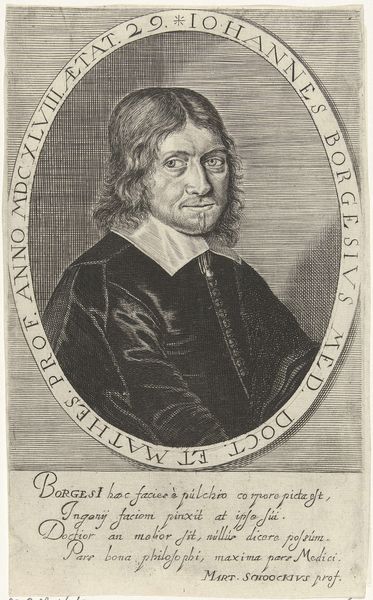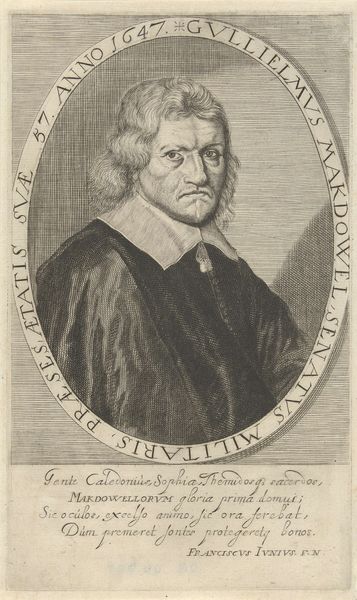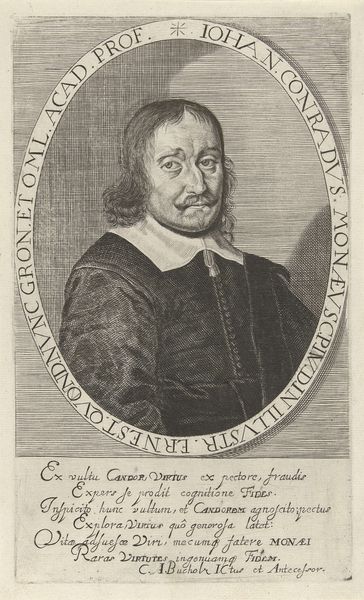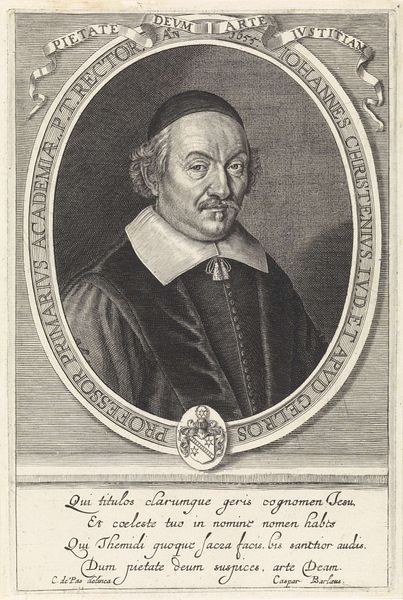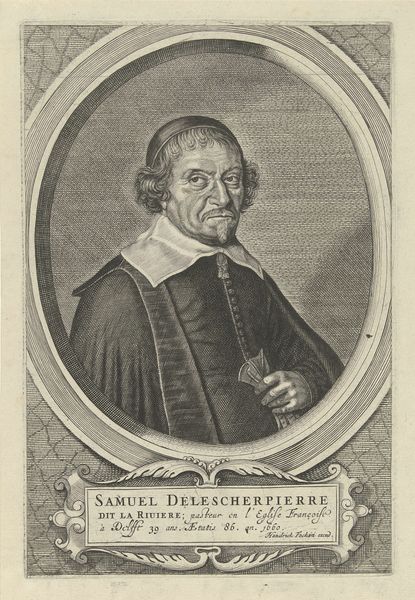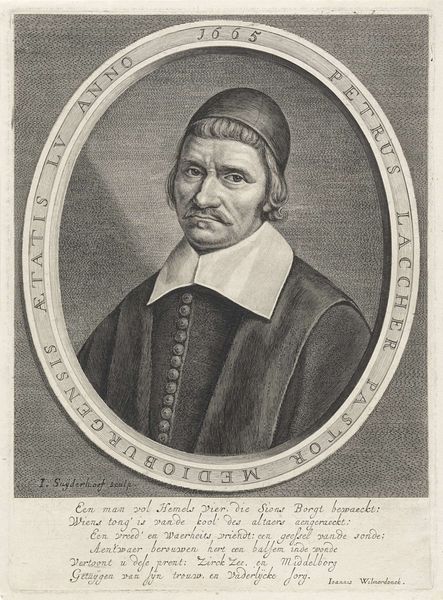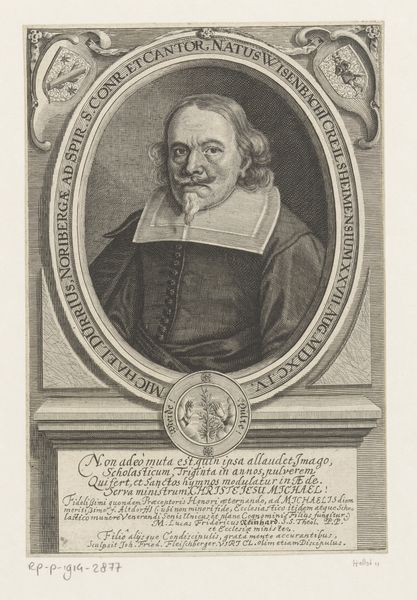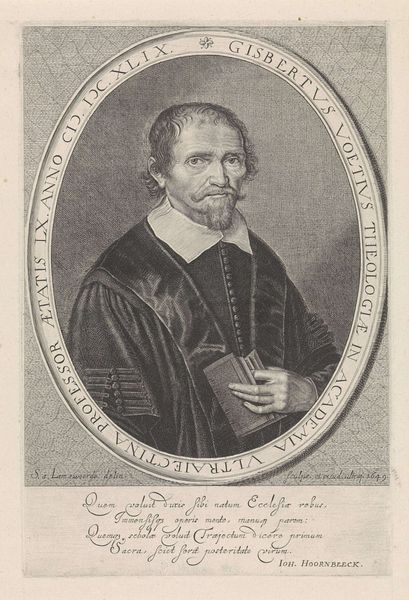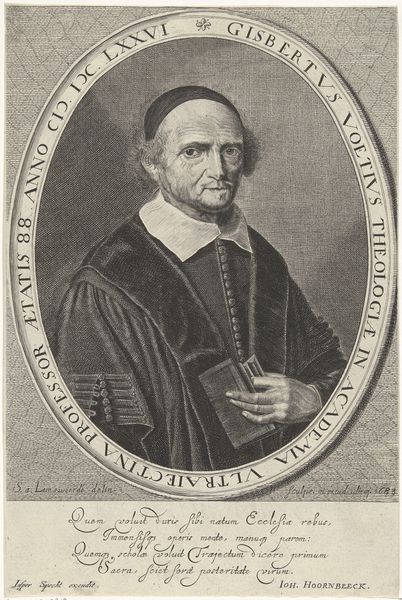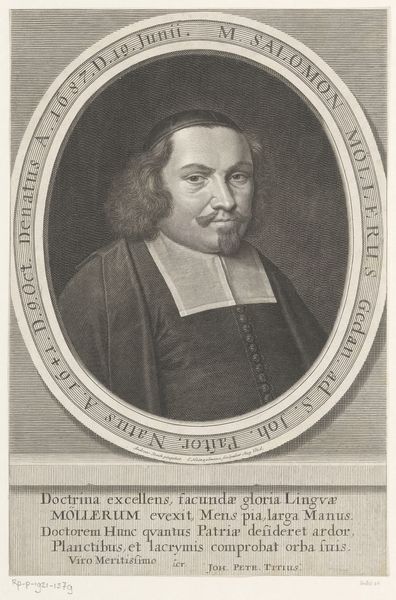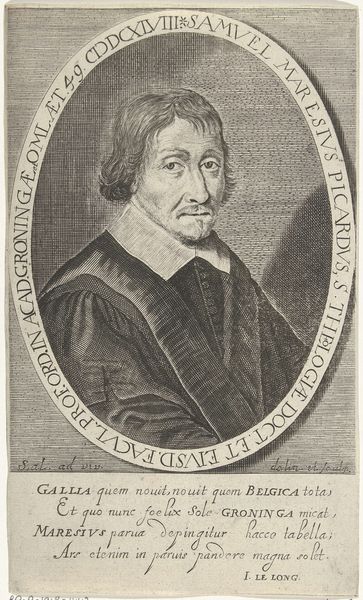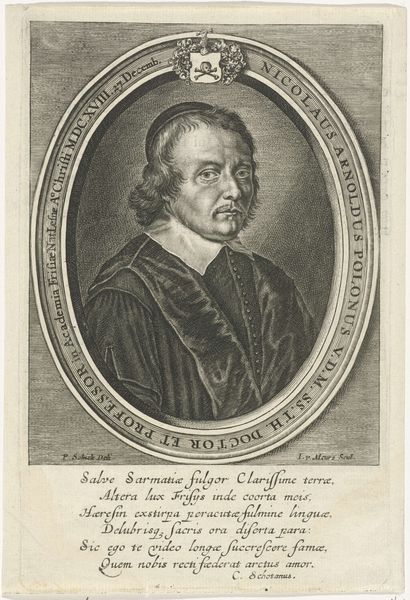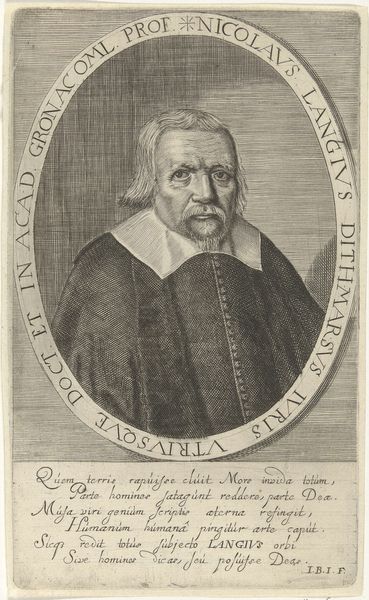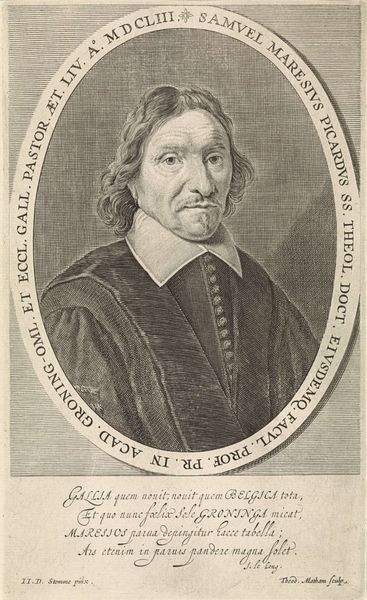
print, engraving
#
portrait
#
aged paper
#
baroque
# print
#
figuration
#
personal sketchbook
#
portrait reference
#
line
#
history-painting
#
engraving
Dimensions: height 212 mm, width 128 mm
Copyright: Rijks Museum: Open Domain
Curator: Here we have "Portret van Christiaan Perizonius," an engraving dating back to 1654, crafted by Steven van Lamsweerde. It presents a distinguished, if somewhat severe, man within an oval frame. What are your first impressions? Editor: There's a gravity to this piece. The man's gaze is intense, almost unnerving. It’s a stark, black and white image that lends itself to solemnity. It makes me wonder about the man’s social role at the time, whether the picture reflected what was in fashion, a realistic record, or an embellishment. Curator: Well, the portrayal of Perizonius aligns with the Dutch Baroque emphasis on realism and the prominence of scholars and intellectuals in the societal consciousness. Prints like this were not just portraits; they served as visual endorsements, celebrating learning and solidifying reputations within academic circles. It's very much a historical commentary on status, achievement, and who got to be seen and remembered. Editor: It’s impossible not to think about access – who would’ve owned this, who could’ve afforded this? The fact that the Baroque Era put so much emphasis on male intellectualism as opposed to the working population is quite classist. The fact this kind of intellectualism was afforded mainly to men, is even more striking. What does the text around the portrait tell us? Curator: The inscription names him and hails him as a man learned in medicine, essentially aligning him with iconic figures like Hippocrates and Galen. These printed images served as tools for circulating knowledge but also for shaping historical narratives. Perizonius wouldn't just have been a face, he would have been part of a canon of wisdom. Editor: The use of the Latin text and references is particularly telling. In doing so, he places himself inside an unbroken and unchallengeable patriarchal line of male figures. But to what degree are the values of medicine itself, and the practices he put in place, ethical and harmful at the same time? Curator: It opens up crucial questions about power, privilege, and representation in historical portraiture. Prints like this offer avenues for thinking about how the institutions shape and control historical figures. Editor: Yes, this really forces one to delve deeper than the surface appeal. Thinking about these undercurrents is critical. Curator: Indeed. It’s an engagement that transforms how we interpret these historical imprints.
Comments
No comments
Be the first to comment and join the conversation on the ultimate creative platform.
